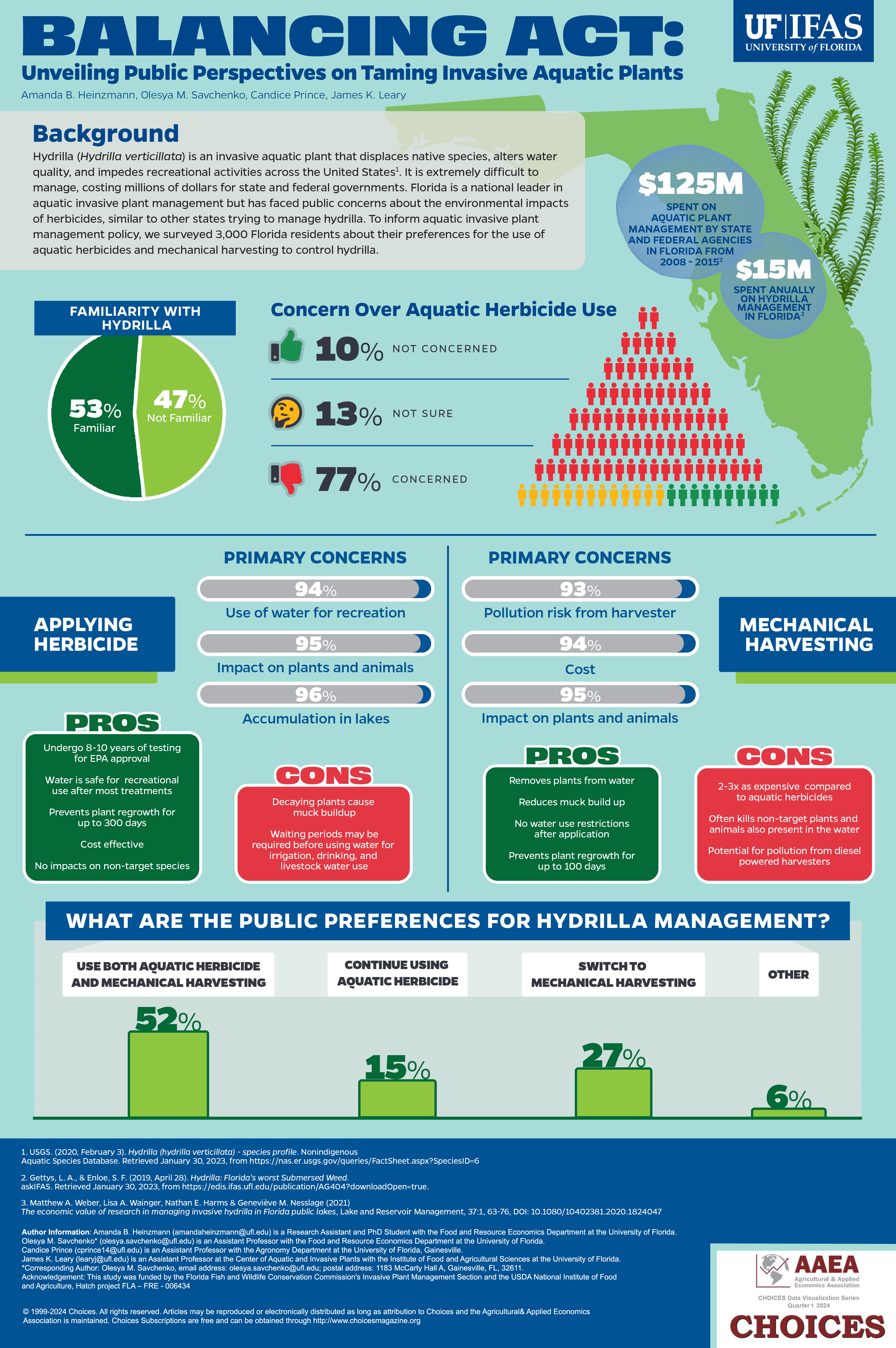
Aquatic invasive species threaten U.S. freshwater bodies throughout the country. One of the most prevalent and prevailing of these is hydrilla (Hydrilla verticillate), which spans from Florida all the way up to Maine, and as far west as California [2]. The state of Florida alone spent $125 million from 2008 – 2015 to manage aquatic invasive species, $66 million of which went toward managing hydrilla [1]. The Florida Fish and Wildlife Conservation Commission (FWC) is estimated to spend $15 million annually on managing hydrilla [3]. This submerged weed is primarily managed through cost effective, safe aquatic herbicides and more costly mechanical harvesting. Due to the prevalence of hydrilla, understanding stakeholder perceptions regarding its management is critical to its successful control. This infographic displays Florida’s stakeholder perceptions around aquatic herbicide and mechanical harvesting usage, which can be utilized as a model for other states as well. Data analysis of 3,000 survey responses concluded that a majority of stakeholders are concerned about both the use of aquatic herbicides and mechanical harvesting. However, they were more concerned about aquatic herbicide application than employing mechanical harvesting. Respondents’ main concern over aquatic herbicide use was the accumulation of chemicals in the lakes upon which it was applied; the main concern over mechanical harvesting was the cost of harvesting operations. When asked what management practice they would prefer FWC to use, a majority of respondents indicated that FWC should use both aquatic herbicides and mechanical harvesting.
Amanda B. Heinzmann (amandaheinzmann@ufl.edu) is a Research Assistant and PhD Student, Food and Resource Economics Department, University of Florida, Gainesville, FL.
Olesya M. Savchenko (olesya.savchenko@ufl.edu) is an Assistant Professor, Food and Resource Economics Department, University of Florida, Gainesville, FL.
Candice Prince (cprince14@ufl.edu) is an Assistant Professor, Agronomy Department, University of Florida, Gainesville, FL.
James K. Leary (learyj@ufl.edu) is an assistant professor at the Center of Aquatic and Invasive Plants, Institute of Food and Agricultural Sciences, University of Florida, Gainesville, FL.
*Corresponding Author: Olesya M. Savchenko, Email address: (olesya.savchenko@ufl.edu); Postal address: Gainesville, FL. Postal address: 1183 McCarty Hall A, Gainesville, FL, 32611.
This study was funded by the Florida Fish and Wildlife Conservation Commission's Invasive Plant Management Section and the USDA National Institute of Food and Agriculture, Hatch project FLA – FRE - 006434
